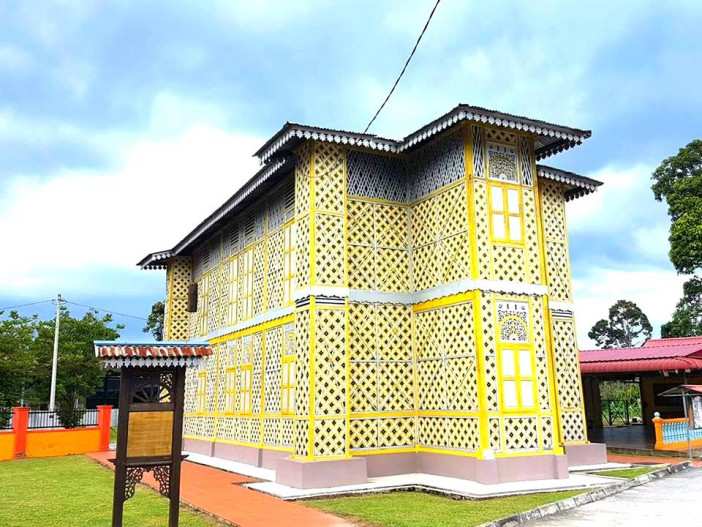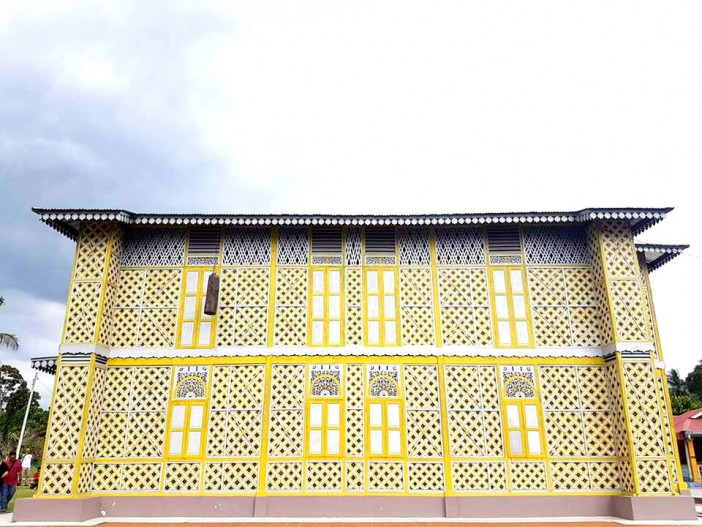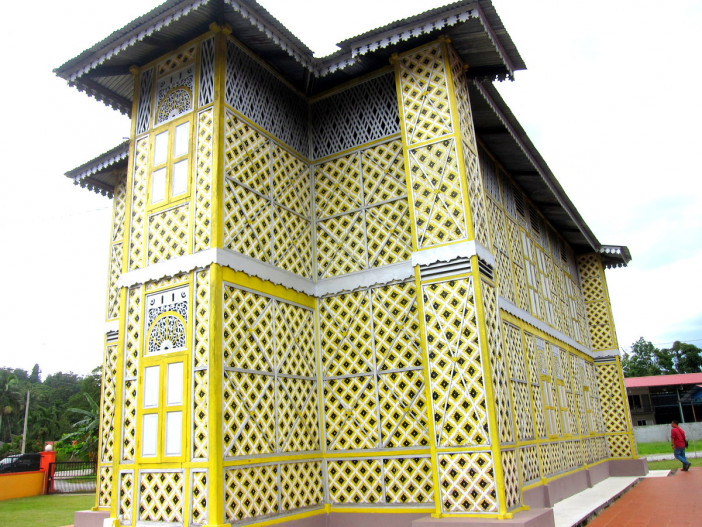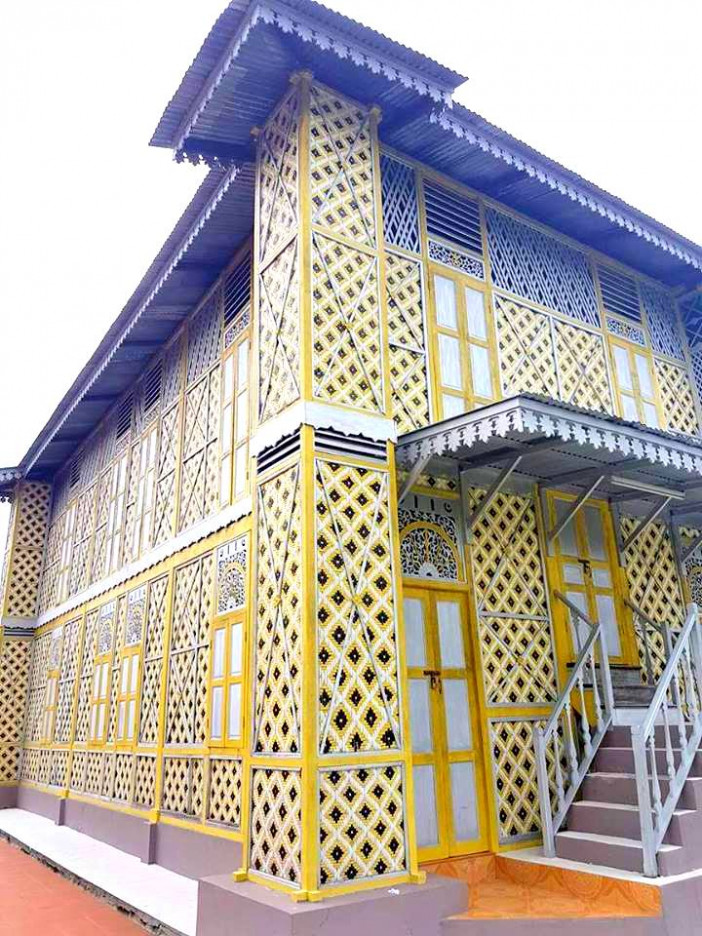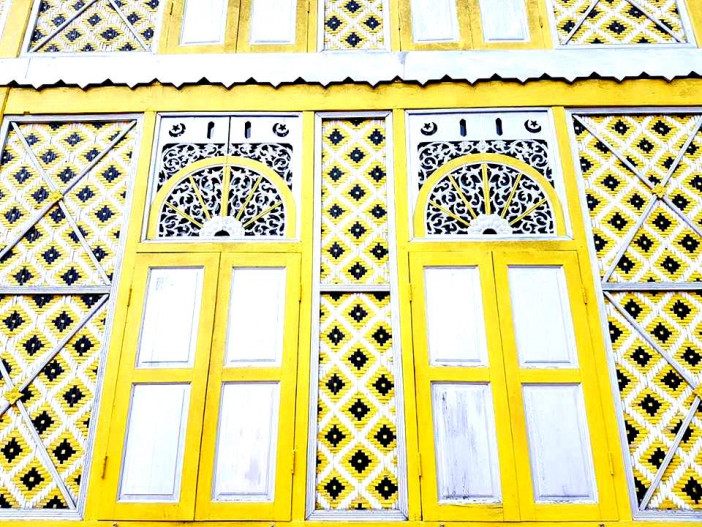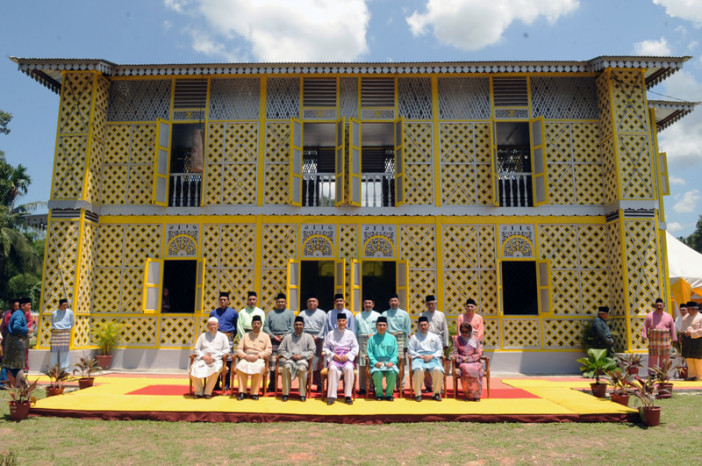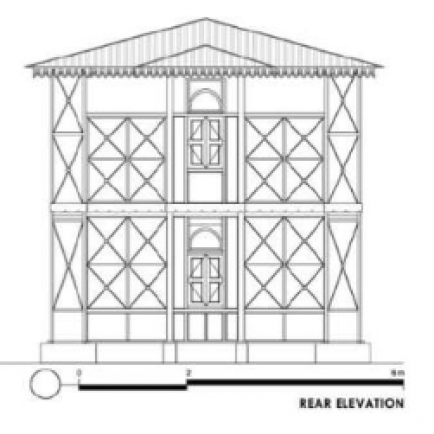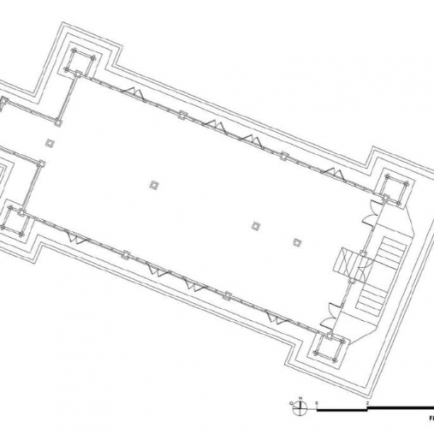Ihsaniah Iskandariah Mosque
History
it was built in 1936 and funded by the then Sultan of Perak, Sultan Iskandar Shah. He was fulfilling a promise to build a mosque following the recovery of one of his children from illness. At the request of the Sultan, the design incorporated some of the architectural features found in his palace, Istana Kenangan, in nearby Bukit Chandan, Kuala Kangsar, most notably the yellow, black and white wall panels made from woven bamboo by local villagers. The colours are those found on the Perak State flag.
The mosque was in use until 1976 then abandoned and fell into disrepair until the Department of National Heritage restored it in 2008. In 2017 it was intended to turn it into a gallery open to the public with free entrance and opening hours from 8am to 5 pm but on the day of my visit it was closed so I could not see inside.
Urban and Architectural
A
rectangular layout plan is strengthened using post-beam timber structures
comprising eight Kemps wood columns, which stand on concrete stumps, Al each of
the four corners, a square space juts out, which acts an attached minaret.
Another jutted square space is spited on the southwest side marking the gibla
direction, where the mihrab space is known to have been possibly located.
The whole well is wrapped with bamboo weaving panels of the diamond pattern, also known as tepas wall. Across The wall, despite its elective ventilation effects, several traditional casement windows and lattice panels are found on the wall, The mosque has been readapted as a madrasa with proper celling and flooring treatment, as well as electricity service, equipped with o step leading upstairs from the entrance door on its south east Side
Description
Ihsaniah Iskandaria Mosque is located in Padang Rengas , Perak , Malaysia. Previously known as the Old Mosque of Kampung Kuala Dal, Padang Rengas.
References
https://www.malaysia-traveller.com/masjid-ihsaniah-iskandariah.html
https://www.heritage.gov.my/masjid-ihsaniah-iskandariah-kampung-kuala-dal-perak.html
https://ms.wikipedia.org/wiki/Masjid_Ihsaniah_Iskandariah
Details
Location
Kampung Kuala Dal, 33700 Padang Rengas, Perak, Malaysia
Worshippers
200
Owners
Sultan Iskandar Shah
Architect Name
Year of Build
1936
Area
148
Drawings
Map
History
it was built in 1936 and funded by the then Sultan of Perak, Sultan Iskandar Shah. He was fulfilling a promise to build a mosque following the recovery of one of his children from illness. At the request of the Sultan, the design incorporated some of the architectural features found in his palace, Istana Kenangan, in nearby Bukit Chandan, Kuala Kangsar, most notably the yellow, black and white wall panels made from woven bamboo by local villagers. The colours are those found on the Perak State flag.
The mosque was in use until 1976 then abandoned and fell into disrepair until the Department of National Heritage restored it in 2008. In 2017 it was intended to turn it into a gallery open to the public with free entrance and opening hours from 8am to 5 pm but on the day of my visit it was closed so I could not see inside.
Urban and Architectural
A
rectangular layout plan is strengthened using post-beam timber structures
comprising eight Kemps wood columns, which stand on concrete stumps, Al each of
the four corners, a square space juts out, which acts an attached minaret.
Another jutted square space is spited on the southwest side marking the gibla
direction, where the mihrab space is known to have been possibly located.
The whole well is wrapped with bamboo weaving panels of the diamond pattern, also known as tepas wall. Across The wall, despite its elective ventilation effects, several traditional casement windows and lattice panels are found on the wall, The mosque has been readapted as a madrasa with proper celling and flooring treatment, as well as electricity service, equipped with o step leading upstairs from the entrance door on its south east Side
Description
Ihsaniah Iskandaria Mosque is located in Padang Rengas , Perak , Malaysia. Previously known as the Old Mosque of Kampung Kuala Dal, Padang Rengas.


